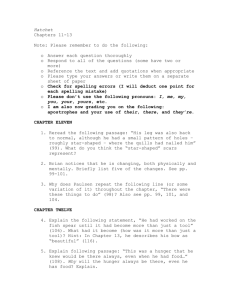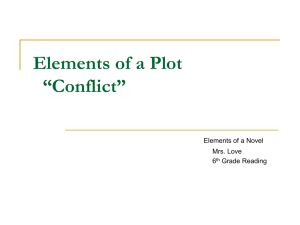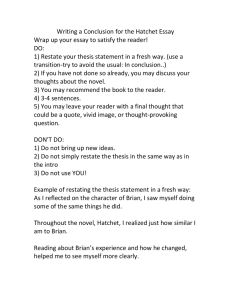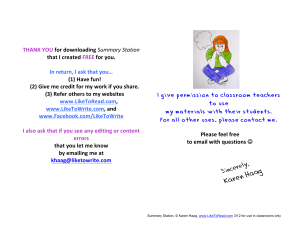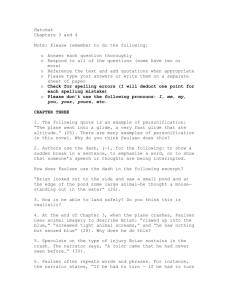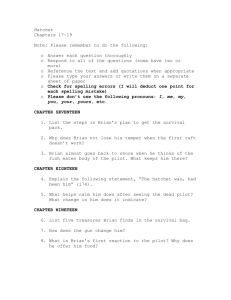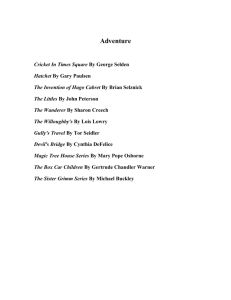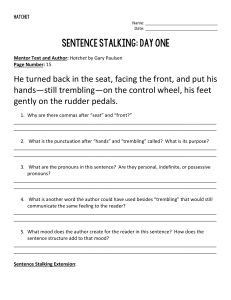Tani Griffin English 329 Craft Moves Page Numbers Explanations
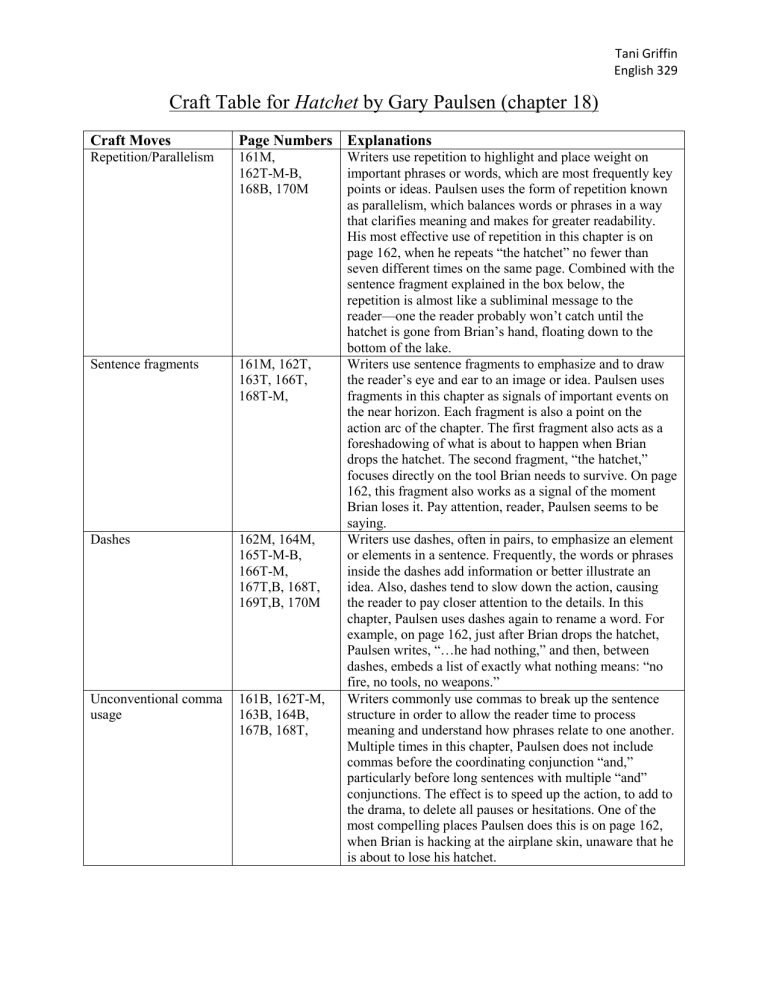
Craft Table for Hatchet by Gary Paulsen (chapter 18)
Tani Griffin
English 329
Craft Moves
Sentence fragments
Dashes
Unconventional comma usage
Page Numbers Explanations
Repetition/Parallelism 161M,
162T-M-B,
168B, 170M
161M, 162T,
163T, 166T,
168T-M,
162M, 164M,
165T-M-B,
166T-M,
167T,B, 168T,
169T,B, 170M
161B, 162T-M,
163B, 164B,
167B, 168T,
Writers use repetition to highlight and place weight on important phrases or words, which are most frequently key points or ideas. Paulsen uses the form of repetition known as parallelism, which balances words or phrases in a way that clarifies meaning and makes for greater readability.
His most effective use of repetition in this chapter is on page 162, when he repeats “the hatchet” no fewer than seven different times on the same page. Combined with the sentence fragment explained in the box below, the repetition is almost like a subliminal message to the reader—one the reader probably won’t catch until the hatchet is gone from Brian’s hand, floating down to the bottom of the lake.
Writers use sentence fragments to emphasize and to draw the reader’s eye and ear to an image or idea. Paulsen uses fragments in this chapter as signals of important events on the near horizon. Each fragment is also a point on the action arc of the chapter. The first fragment also acts as a foreshadowing of what is about to happen when Brian drops the hatchet. The second fragment, “the hatchet,” focuses directly on the tool Brian needs to survive. On page
162, this fragment also works as a signal of the moment
Brian loses it. Pay attention, reader, Paulsen seems to be saying.
Writers use dashes, often in pairs, to emphasize an element or elements in a sentence. Frequently, the words or phrases inside the dashes add information or better illustrate an idea. Also, dashes tend to slow down the action, causing the reader to pay closer attention to the details. In this chapter, Paulsen uses dashes again to rename a word. For example, on page 162, just after Brian drops the hatchet,
Paulsen writes, “…he had nothing,” and then, between dashes, embeds a list of exactly what nothing means: “no fire, no tools, no weapons.”
Writers commonly use commas to break up the sentence structure in order to allow the reader time to process meaning and understand how phrases relate to one another.
Multiple times in this chapter, Paulsen does not include commas before the coordinating conjunction “and,” particularly before long sentences with multiple “and” conjunctions. The effect is to speed up the action, to add to the drama, to delete all pauses or hesitations. One of the most compelling places Paulsen does this is on page 162, when Brian is hacking at the airplane skin, unaware that he is about to lose his hatchet.
